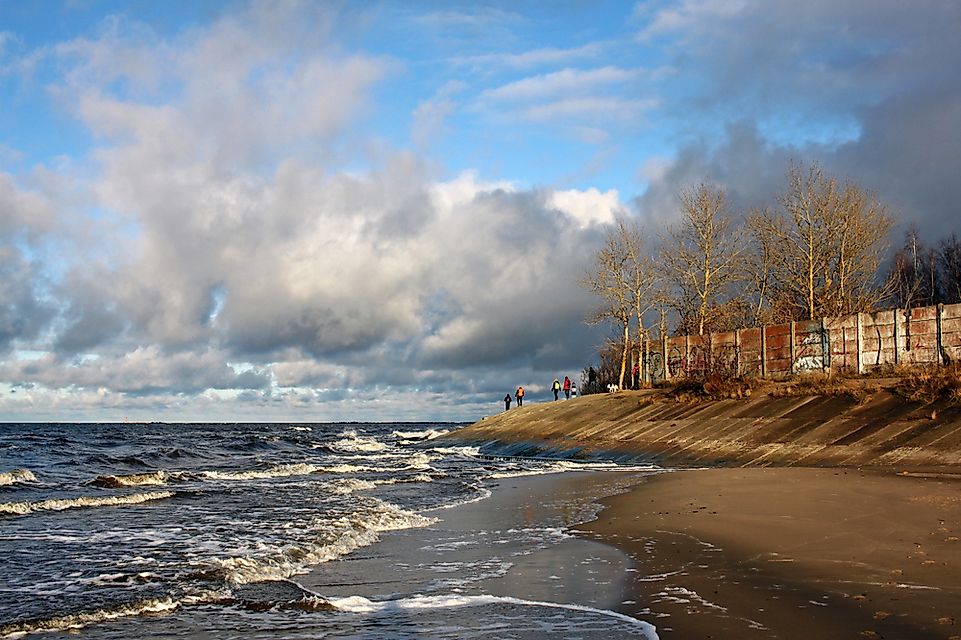10 Important Facts About the Gulf of Riga

10 Important Facts About the Gulf of Riga
1. The Gulf of Riga is located in the Baltic Sea, between Estonia and Latvia. The gulf is partially separated from the Baltic Sea by the island of Saaremaa, which is Estonian territory. The Gulf of Riga also includes the Väinameri Sea, and is connected to the Baltic Sea by the Irbe Strait.
2. The International Hydrographic Organization (IHO) set the western boundary of the Gulf of Riga at the following coordinates: 57°34'N and 22°34'E. This limit extends into both Estonia and Latvia, and covers Œsel Island, Pammerort, Enmast Point, Dago, Takhkona Point and Spithamn Point.
3. The Gulf of Riga experiences large fluctuations in temperature throughout the year. From late June until mid-August the water temperature along the coast remains above 18°C. During summer the temperature rises to between 26–28°C along the coast, and 22–23°C at the center of the gulf. Part of the Gulf of Riga freezes during winter, especially on the Estonian end.
4. Freshwater flowing to the Baltic sea accounts for 2% of the gulf’s volume. A narrow connection between the Baltic and the North Sea extends the average years of water staying in the Baltic by approximately 30 years, and therefore the sea is very brackish. The Gulf of Riga has a salt concentration of between six and ten, while a freshwater body has an average salinity of 0.5.
5. The gulf covers an area of 6,900 square miles, has an average depth of 85 ft, and a maximum depth of 220 ft. The residence period of water is about 30 years.
6. The Gulf of Riga drains an area of approximately 51,737 square miles of urban, agricultural, and industrial land. Daugava flows from Latvia to Russia through Belarus. Other rivers that flow into the bay include the Parnu, Lielupe, Gauja, and Salaca.
7. The Gulf of Riga supports several species of sea creatures including crustaceans which are also found in other parts of the Baltic Sea. The oxygenated water creates a condition that favors the development of benthic and pelagic organisms. However, the sandy sediment and low salinity are subjected to frequent turbulences, leading to a small number of phytobenthic species.
8. The city of Jurmala, located on the shore of the Gulf of Riga, is among the most popular destination in Estonia. It is a resort town with a 20-mile coastline, and is sandwiched between the Lielupe River and the gulf. Some tourist attractions in Jurmala include Dzintari Forest Park and Ķemeri National Park.
9. In August 1915 German and Russian naval forces engaged in a fierce fight in the Gulf of Riga, with the Germans seeking to destroy the entire Russian naval unit in and seize control of the gulf. The Russians placed mines along the entry to the gulf, but German minesweepers were able to identify and destroy the mines. The Russian naval fleet was no match for the Germans and was quickly overrun. However, Allied submarines reached the gulf and forced the Germans to withdraw.
10. On 1 September 1917, only two weeks after their naval fleet withdrew from the Gulf of Riga, it was captured by the German Army.











